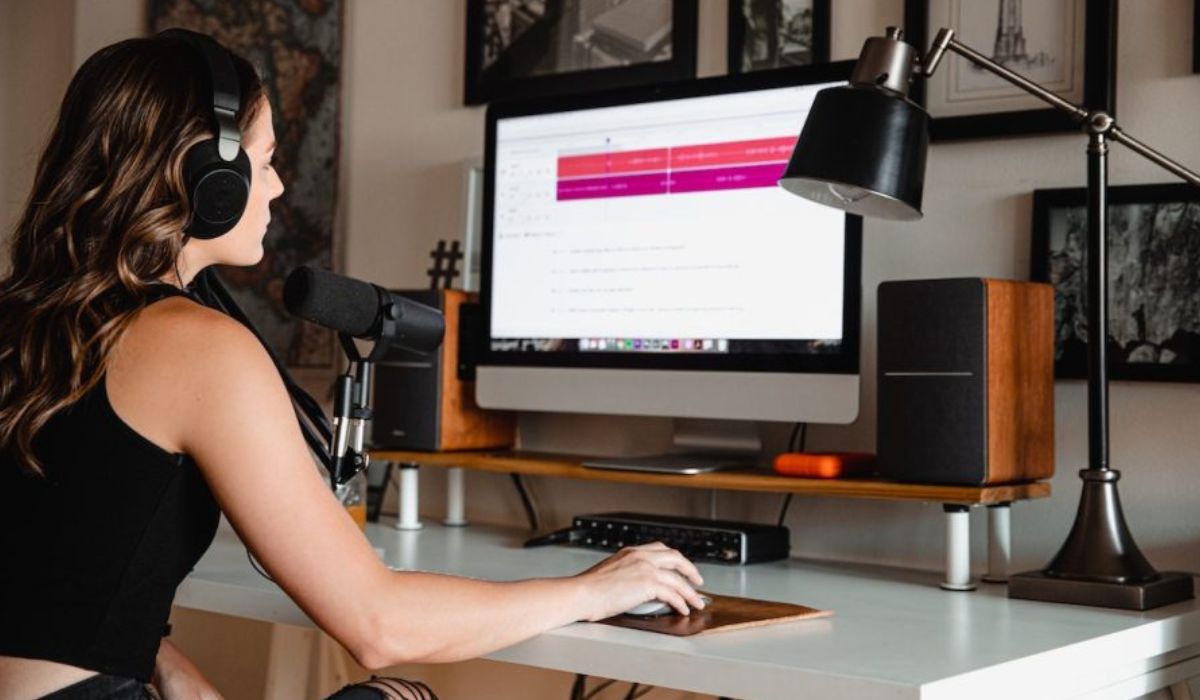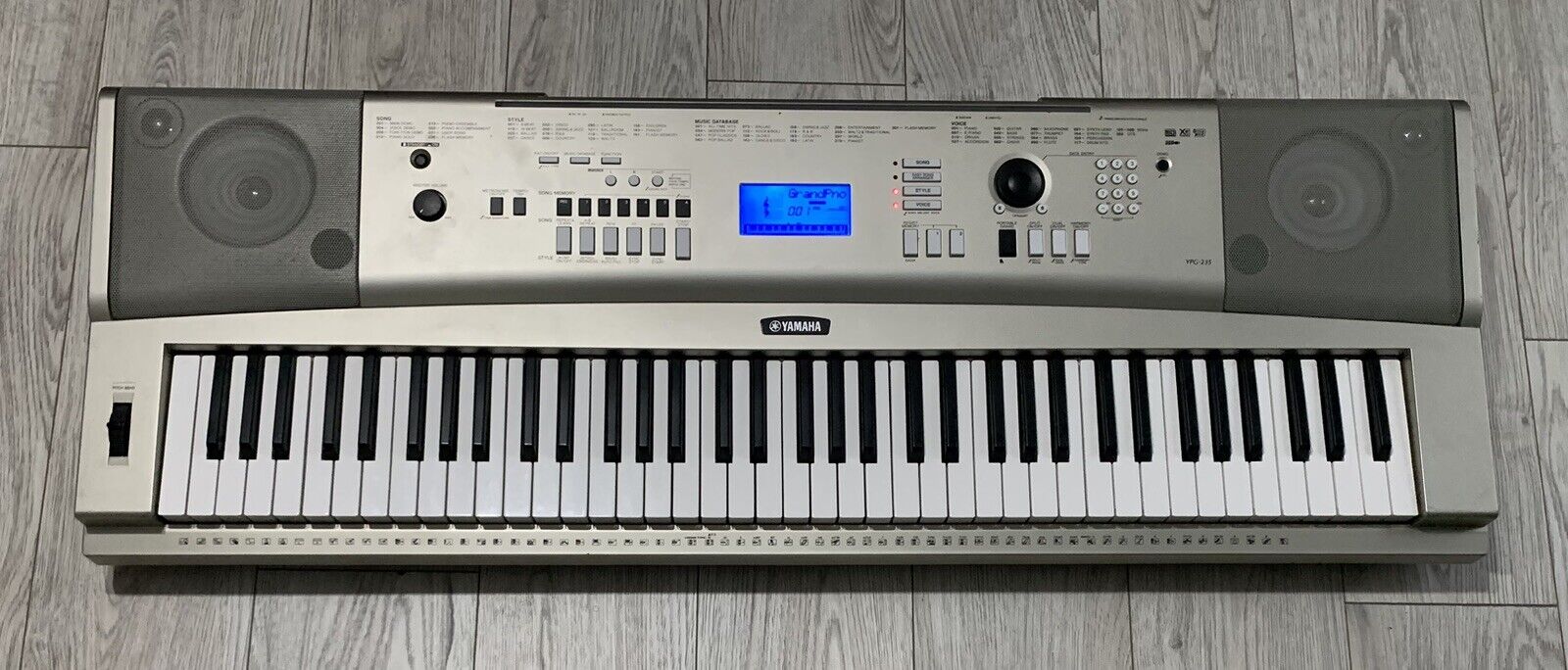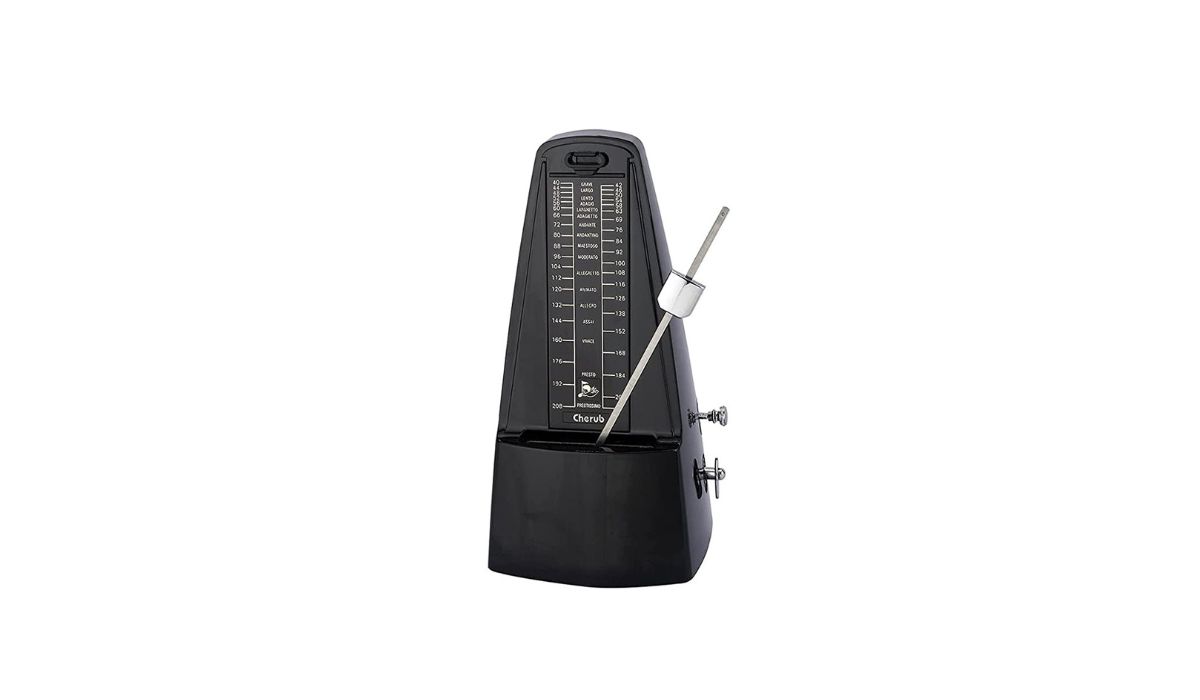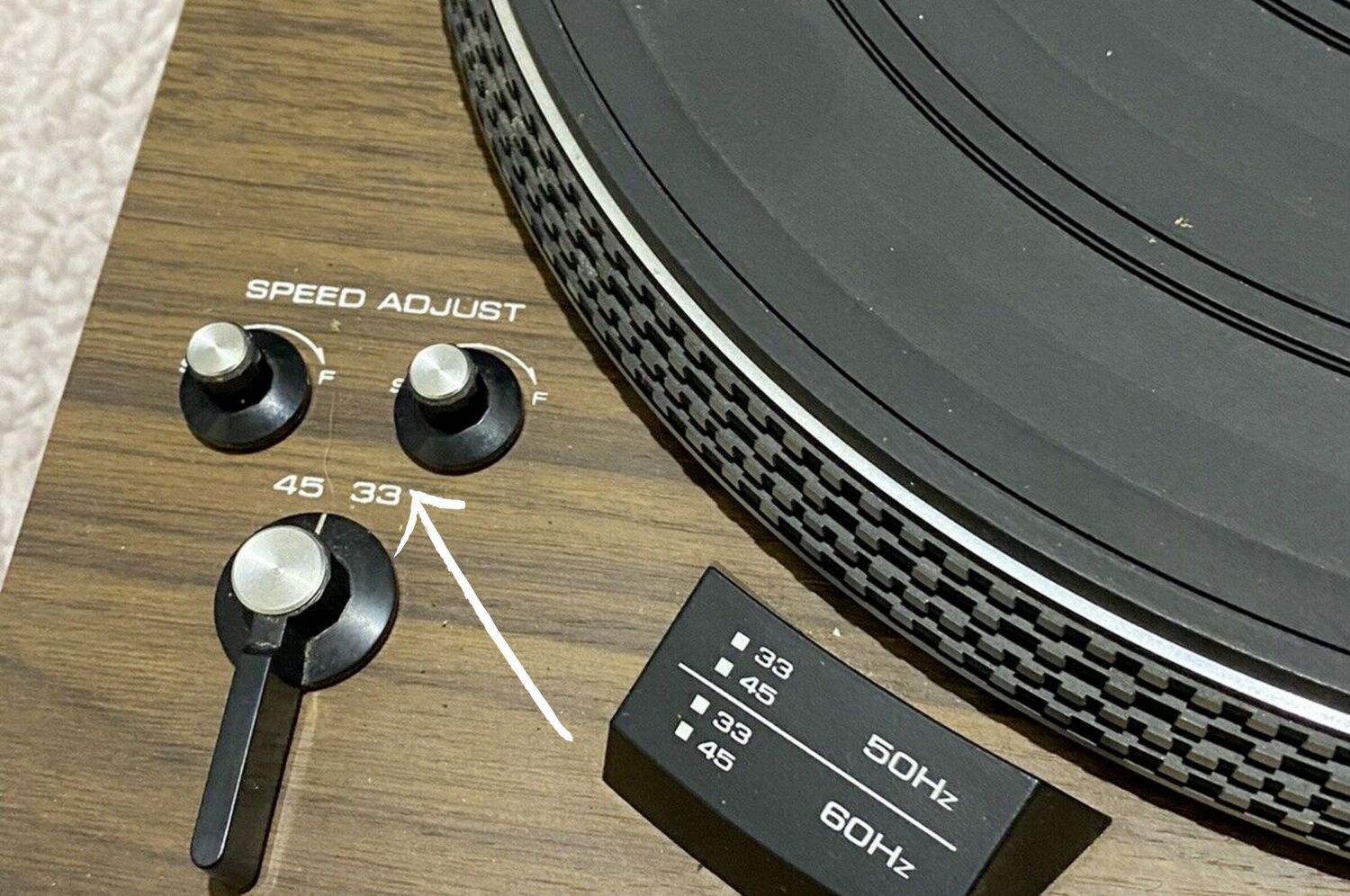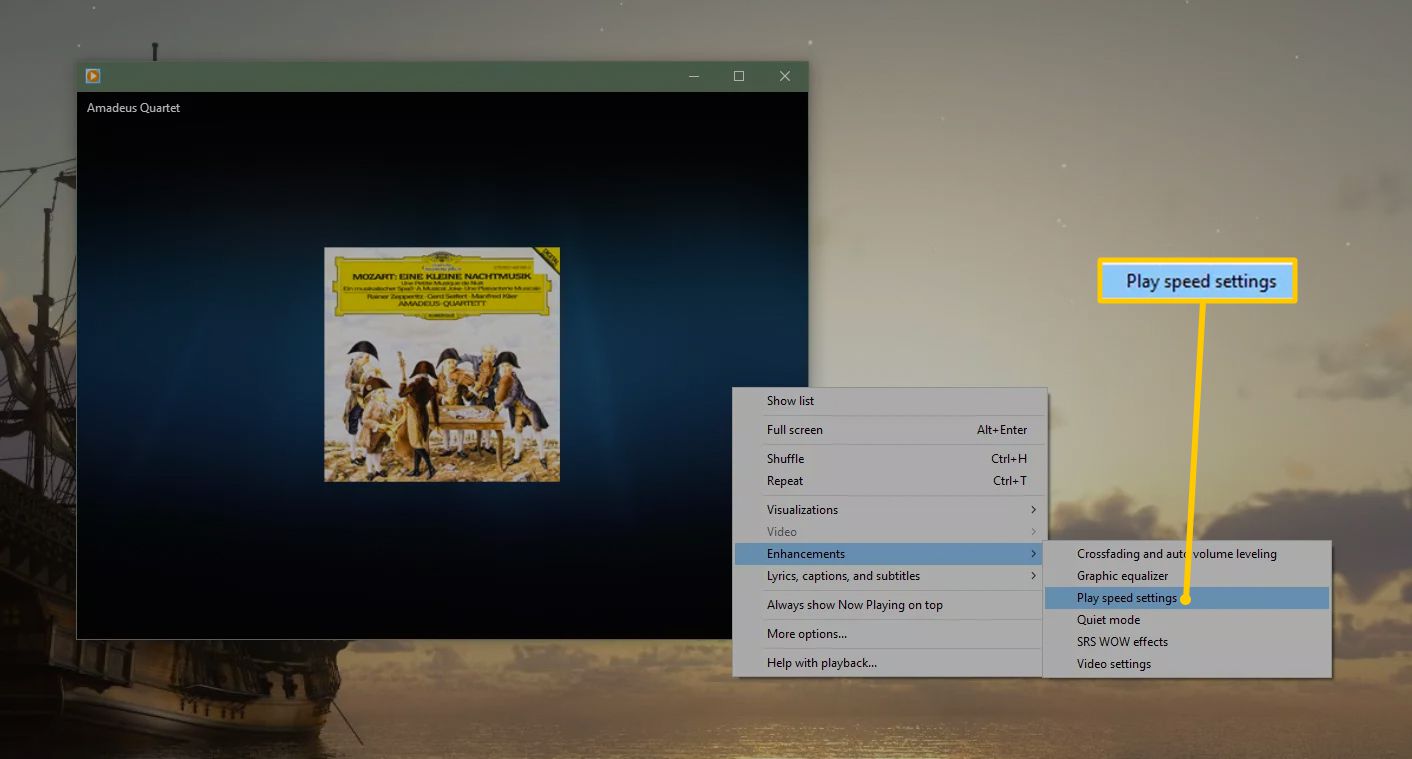Home>Production & Technology>Metronome>When To Speed Up Metronome


Metronome
When To Speed Up Metronome
Published: January 13, 2024
Discover when to speed up your metronome and improve your musical performance. Use our expert tips and tricks to optimize your practice sessions with the metronome.
(Many of the links in this article redirect to a specific reviewed product. Your purchase of these products through affiliate links helps to generate commission for AudioLover.com, at no extra cost. Learn more)
Table of Contents
Introduction
In the world of music, timing is everything. Whether you’re a musician learning a new piece or a band rehearsing for an upcoming performance, maintaining a consistent tempo is essential for a polished and cohesive sound. This is where a metronome comes into play.
A metronome is a device that produces a regular, steady beat to help musicians stay on track with their tempo. It can be a valuable tool for musicians of all skill levels, from beginners to seasoned professionals. By providing a consistent beat, a metronome helps musicians develop a strong sense of timing and improve their overall rhythmic accuracy.
Using a metronome has become increasingly popular in recent years, thanks to advancements in technology. You can now find metronome apps and digital metronomes that offer a range of features and customization options. But regardless of the format, the goal remains the same: to help musicians play in time.
In this article, we will explore the benefits of playing with a metronome and when it may be appropriate to speed up the metronome tempo. We will also discuss the significance of increasing the metronome speed and provide valuable tips for doing so effectively. So, whether you’re a beginner guitarist or an experienced pianist, let’s dive in and discover how the metronome can take your musical skills to the next level.
Why Use a Metronome
The use of a metronome offers numerous benefits to musicians of all levels. Let’s explore why incorporating this invaluable tool into your practice routine can greatly enhance your musical abilities.
1. Improves timing and rhythm: One of the primary reasons musicians use a metronome is to develop a solid sense of timing and rhythm. The metronome provides a consistent beat that helps musicians stay on tempo and play in sync with others. Whether you’re practicing scales, playing chords, or performing complex arpeggios, the metronome acts as a reliable guide to keep you in time.
2. Builds accuracy and precision: Playing with a metronome forces you to develop precision in your playing. It helps you become more aware of subtle tempo variations and potential inconsistencies. As you strive to match the metronome’s beat precisely, you’ll train your muscles and brain to execute notes and phrases with increased accuracy.
3. Enhances internal timekeeping: By practicing regularly with a metronome, you will develop a strong internal sense of time. This internal metronome becomes invaluable when playing with other musicians or in a band, as it allows you to maintain a steady tempo without the need for assistance from an external metronome.
4. Improves overall musicianship: Playing with a metronome not only helps with timing and rhythm but also enhances your overall musicianship. It teaches you patience, discipline, and the importance of diligence in practice. It also helps you develop a better understanding of musical phrasing and dynamics as you work to fit your playing within the framework of the metronome’s beat.
5. Prepares for performances: When preparing for a live performance or recording session, using a metronome is crucial. It ensures that you can confidently and consistently reproduce your pieces at the desired tempo. By rehearsing with a metronome, you’ll build the muscle memory needed to stay on tempo under pressure, giving you the confidence to deliver a flawless performance.
In summary, a metronome is an invaluable tool for musicians looking to improve their timing, accuracy, and overall musicianship. Whether you’re a beginner or an experienced player, incorporating a metronome into your practice routine will yield significant benefits and help you reach your musical goals more efficiently.
Benefits of Playing with a Metronome
Playing with a metronome offers a wide range of benefits that can greatly enhance your musical skills and performance. Let’s delve into some of the key advantages of incorporating a metronome into your practice routine.
1. Improved timing and rhythm: The most obvious benefit of playing with a metronome is the improvement in timing and rhythm. The metronome provides a steady beat that acts as a reference point for musicians, helping them develop a precise sense of timing. By consistently practicing with a metronome, you’ll enhance your ability to play in time, which is crucial for performing with other musicians or in a band setting.
2. Increased accuracy and precision: Playing with a metronome challenges you to play each note or phrase exactly in line with the beat. This helps develop accuracy and precision in your playing, as you strive to match the metronome’s tempo precisely. Over time, this attention to detail will improve your overall technique and ensure that your playing is clean and consistent.
3. Develops internal sense of time: One significant benefit of playing with a metronome is the development of an internal sense of time. As you practice regularly with a metronome, you train your brain and muscles to internalize the rhythm and tempo. This internal metronome becomes invaluable when playing without a metronome, as you’ll be able to maintain a steady tempo and stay in sync with other musicians.
4. Enhances dynamics and phrasing: Playing with a metronome can help you develop a better understanding of musical dynamics and phrasing. By practicing with the metronome, you’ll learn to fit your playing within the framework of the beat, creating a more expressive and musical performance. This ability to play with precision while still maintaining musicality is essential for captivating and engaging audiences.
5. Builds discipline and focus: Practicing with a metronome requires discipline and focus. It teaches you to stay committed to a tempo and maintain concentration throughout your practice sessions. This discipline carries over to other aspects of your music, helping you become a more dedicated and attentive musician.
6. Preparation for performances: Using a metronome in your practice routine prepares you for live performances or recording sessions. It ensures that you can confidently and consistently play your pieces at the desired tempo. By rehearsing with a metronome, you’ll build muscle memory and develop the ability to stay on tempo under pressure, giving you the confidence to deliver a polished performance.
In summary, playing with a metronome offers a myriad of benefits, including improved timing, increased accuracy, and the development of an internal sense of time. It also enhances dynamics, builds discipline, and prepares you for performances. By incorporating a metronome into your practice routine, you’ll elevate your musical abilities and become a more confident and proficient musician.
Factors to Consider When Choosing a Metronome
Selecting the right metronome for your needs is crucial to ensure a positive and productive practice experience. With so many options available, it’s important to consider the following factors before making your decision.
1. Type of metronome: There are various types of metronomes available, including mechanical, digital, and mobile app versions. Mechanical metronomes have a traditional charm and don’t require batteries, but they may be less accurate. Digital metronomes offer more features and customization options, while mobile app metronomes provide convenience and portability. Consider your preferences and requirements to determine the best type for you.
2. Accuracy and consistency: The primary function of a metronome is to provide a consistent beat. Ensure that the metronome you choose offers accurate and precise timing. Look for models with adjustable tempos and subdivisions to cater to different musical styles and complex rhythms.
3. Tempo range: Consider the tempo range of the metronome. Make sure it covers the full range you need for your practice, from slow and steady tempos to fast and challenging ones. This flexibility allows you to practice different genres and technical exercises without limitations.
4. Visual and auditory indicators: Look for a metronome that offers clear visual and auditory indicators. Visual indicators can include flashing lights or moving pendulums, while auditory indicators can include beeps, clicks, or even realistic drum sounds. Having multiple sensory cues will make it easier to stay on tempo and track your progress.
5. Customization options: Consider the customization options offered by the metronome. Can you adjust the volume, accent beats, or add in time signatures and subdivisions? Customization allows you to tailor the metronome settings to your specific practice needs and musical preferences.
6. Portability and durability: If you’re a musician on the go or frequently gigging, consider the portability and durability of the metronome. Compact and lightweight designs are ideal for travel, while sturdy construction ensures longevity, even with frequent use.
7. Additional features: Some metronomes come with extra features, such as a built-in tuner, stopwatch, or even a recording function. While not essential, these features can be advantageous for musicians looking to streamline their practice routine and have all the necessary tools in one device.
8. Price range: Finally, consider your budget. Metronomes come in a wide range of prices, from affordable options for beginners to more advanced and expensive models for professionals. Determine your price range and choose a metronome that offers the best value for your investment.
By considering these factors and aligning them with your specific needs and preferences, you can select a metronome that suits your playing style and goals. Remember that the right metronome can greatly enhance your practice sessions and help you become a more precise and confident musician.
When to Speed Up the Metronome
Knowing when to increase the tempo on your metronome is essential for continued growth and progress as a musician. Here are some situations where you should consider speeding up the metronome tempo in your practice sessions.
1. Mastering a piece: Once you have mastered a musical piece at a slower tempo, it is time to challenge yourself by gradually increasing the metronome speed. This allows you to push your limits and develop greater fluency and control over the piece. Start by increasing the tempo by 5-10 beats per minute (BPM) and continue to progress as you become more comfortable and confident at each new tempo.
2. Improving technical ability: When it comes to challenging technical passages or exercises, increasing the metronome speed can help you build agility and precision. By gradually increasing the tempo, you will train your muscles and improve your coordination, allowing you to play faster and more accurately. Focus on maintaining clarity and control over each note, even at higher tempos, to ensure a clean and polished performance.
3. Preparing for performance: If you have an upcoming performance or audition, it’s important to practice at the tempo required for the actual event. Increasing the metronome speed gradually will help you prepare for the performance tempo, ensuring that you can play with confidence and precision when the time comes. Practice at the desired tempo multiple times to build muscle memory and reinforce your ability to play effortlessly under performance pressure.
4. Developing rhythmic skills: Increasing the metronome speed is an effective way to improve your rhythmic skills. It forces you to internalize more complex subdivisions and develop a sense of accuracy and consistency at faster tempos. Practice playing various rhythmic patterns or syncopated rhythms at increasing metronome speeds to enhance your rhythmic dexterity and expand your musical vocabulary.
5. Playing with others: When playing in an ensemble or band, it’s crucial to be able to keep up with the tempo set by the group. Gradually increasing the metronome speed can help you develop the ability to play in sync with other musicians. Start by practicing at a tempo slightly faster than your comfort zone and gradually push it until you can confidently play at the desired speed alongside your bandmates.
Be mindful not to rush the process of increasing the metronome speed. It’s crucial to take it step by step and ensure that you are maintaining control and accuracy at each tempo before moving on. Remember, the goal is to gradually build your skills and develop a solid foundation of technique and musicianship at faster tempos.
By strategically increasing the metronome speed in these specific situations, you will challenge yourself, refine your playing, and ultimately become a more versatile and accomplished musician.
Significance of Increasing Metronome Speed
Increasing the metronome speed in your practice sessions plays a significant role in your musical development. Here’s why it is important and the benefits it can bring to your playing.
1. Building speed and agility: Increasing the metronome speed allows you to develop greater speed and agility on your instrument. By gradually pushing your limits and challenging yourself to play at faster tempos, you will build the necessary muscle memory and coordination to execute faster passages with precision and fluidity. This is essential for genres such as jazz, rock, and metal, where technical proficiency and speed are highly valued.
2. Improving rhythmic accuracy: Increasing the metronome speed helps you improve your rhythmic accuracy and timing. As you practice playing at faster tempos, you train your internal sense of timing to become more precise and responsive. This translates to improved rhythmic accuracy and tighter synchronization with other musicians when playing in a band or ensemble setting. The ability to maintain a steady tempo and play with accuracy is crucial for delivering a polished and professional performance.
3. Enhancing dynamic control: When you increase the metronome speed, you are challenged to maintain dynamic control over your playing. Playing at faster tempos requires greater control and finesse to ensure that softer passages are not overpowered and louder sections are not rushed or sloppy. By practicing at higher speeds, you develop the ability to execute dynamics accurately and maintain expressive playing, even in demanding musical passages.
4. Expanding musical repertoire: Increasing the metronome speed allows you to expand your musical repertoire and explore genres and pieces that were previously beyond your reach. By gradually building up the tempo, you can take on more challenging compositions and explore new musical styles. This opens up a whole world of musical possibilities and helps you grow as a well-rounded musician.
5. Developing mental focus and endurance: Playing at faster tempos requires intense concentration and mental focus. As you increase the metronome speed, you train your mind to keep up with the demands of playing at a higher tempo. This improves your mental endurance, allowing you to sustain focused attention during longer practice sessions and performances. The ability to maintain focus and mental clarity under pressure is crucial for delivering confident and engaging performances.
It’s important to note that increasing the metronome speed should be done gradually and with proper technique. Rushing the process can lead to sloppy playing or tension in your muscles. Start with small increments in tempo and ensure that you maintain control and accuracy before moving on to higher speeds.
By increasing the metronome speed, you challenge yourself to reach new levels of speed, precision, and musicality. It helps you develop speed and agility, improve rhythmic accuracy, enhance dynamic control, expand your repertoire, and strengthen mental focus and endurance. Embrace the significance of increasing metronome speed in your practice routine, and watch as your playing reaches new heights.
Tips for Gradually Increasing Metronome Speed
Gradually increasing the metronome speed is crucial to ensure that you maintain control and accuracy as you challenge yourself to play at faster tempos. Here are some tips to help you navigate this process effectively and maximize your progress:
1. Start slow: Begin by practicing the piece or exercise at a tempo that is comfortably within your abilities. This establishes a strong foundation and allows you to focus on technique, precision, and musicality. Starting slow also helps you build the necessary muscle memory required for faster tempos.
2. Use small increments: Increase the metronome speed in small increments. Aiming for an increase of 5-10 beats per minute (BPM) is a good starting point. This gradual approach ensures that you maintain control and accuracy as you push your limits, allowing you to build confidence and achieve greater speed over time.
3. Focus on technique: Pay close attention to your technique as you increase the metronome speed. Maintain proper hand and finger positions, good posture, and relaxed muscles. By focusing on technique, you ensure that your playing remains clean and efficient, even at faster tempos.
4. Practice in sections: If you are working on a longer piece or complex technical exercise, break it down into smaller sections and practice each section at a manageable tempo. Once you achieve mastery at a slower tempo, gradually increase the speed for each section individually before putting them together. This approach allows you to concentrate on challenging sections and ensures a smooth transition between sections at different tempos.
5. Listen for clarity: As you increase the metronome speed, listen carefully for clarity in your playing. It’s important to maintain a clean and distinct sound even at faster tempos. Pay attention to note articulation, chord voicings, and the overall balance of your playing. If you notice any muddiness or inconsistencies, slow down the tempo slightly and address the areas that need improvement.
6. Mix it up: Vary your practice routine by incorporating exercises specifically designed to improve speed and dexterity. For example, practice scales or technical exercises with a metronome, gradually increasing the tempo over time. You can also experiment with different rhythmic patterns and subdivisions to challenge your rhythmic accuracy at higher speeds.
7. Take breaks: It’s important to give your muscles and mind a break when working on increasing metronome speed. Fatigue can lead to tension and decreased accuracy. Take short breaks during practice sessions and allow yourself time to rest and reset before continuing. This will help you maintain focus and energy throughout your practice routine.
8. Record yourself: Record your practice sessions and listen back to evaluate your progress. This allows you to objectively assess your playing and identify areas that require improvement. It also serves as a great reference point to track your growth as you increase the metronome speed over time.
Remember, the goal is to build your speed gradually and maintain control and accuracy as you push your limits. Stay patient and persistent, and celebrate small milestones along the way. By following these tips and incorporating dedicated practice, you will gradually increase your metronome speed and achieve greater proficiency on your instrument.
Common Pitfalls to Avoid
When working on increasing the metronome speed, it’s important to be aware of and avoid common pitfalls that can hinder your progress. Here are some common pitfalls to watch out for:
1. Rushing the process: One of the most common pitfalls is rushing the process of increasing the metronome speed. It’s important to remember that building speed takes time and patience. Gradually increase the tempo, ensuring that you maintain control and accuracy at each new speed before pushing further.
2. Neglecting technique: Another common pitfall is neglecting technique while focusing solely on speed. It’s crucial to prioritize proper technique, regardless of the tempo. Keep an eye on hand positions, fingerings, and overall posture, ensuring that your playing remains clean and relaxed at all speeds.
3. Lack of consistency: Consistency is key when it comes to increasing the metronome speed. Regular practice sessions, even for shorter durations, yield better results compared to sporadic, longer practice sessions. Set a practice schedule and stick to it to maintain progress and build endurance.
4. Ignoring dynamics and musicality: Don’t sacrifice dynamics and musicality in pursuit of speed. It’s essential to maintain expressiveness and control over your playing, even at faster tempos. Pay attention to phrasing, dynamics, and musical nuances to ensure that your performance remains engaging and emotive.
5. Overlooking accuracy: Speed should not come at the expense of accuracy. It’s better to play at a slower tempo with precision than to rush through a piece with mistakes. Focus on accuracy and gradually increase the tempo while ensuring that your playing remains clean and accurate.
6. Not using a metronome: While it may be tempting to increase the tempo without a metronome, this can lead to inconsistent timing and poor rhythm. Using a metronome as a reference point ensures that you stay on track and develop a solid internal sense of timing. Incorporate a metronome into your practice routine to foster consistent tempo and rhythmic accuracy.
7. Forgetting the bigger picture: It’s important to remember that increasing the metronome speed is just one aspect of musical development. Balance your practice routine by incorporating other elements such as scales, technique exercises, and musical interpretation. Don’t solely focus on speed; aim for well-rounded musicianship.
8. Not seeking guidance: If you find yourself struggling to increase the tempo despite regular practice, consider seeking guidance from a music teacher or mentor. They can provide valuable feedback, identify areas for improvement, and offer specialized exercises or techniques to help you overcome any hurdles.
By being mindful of these common pitfalls, you can avoid setbacks and make steady progress as you increase the metronome speed. Stay patient, practice consistently, and remember that building speed is a gradual process that requires attention to detail and consistent effort.
Conclusion
Incorporating a metronome into your practice routine can greatly enhance your musical skills and elevate your performance. From improving timing and rhythm to developing precision and control, the benefits of playing with a metronome are numerous. By gradually increasing the metronome speed, you can challenge yourself, push your limits, and unlock new levels of speed and accuracy on your instrument.
When choosing a metronome, consider factors such as accuracy, tempo range, visual and auditory indicators, customization options, portability, and additional features. Selecting the right metronome for your needs is crucial to ensure a productive practice experience.
Knowing when to increase the tempo on your metronome is key. Whether you’re mastering a piece, improving technical ability, preparing for performances, developing rhythmic skills, or playing with others, gradually increasing the metronome speed allows you to progress and reach your musical goals.
It is essential to remember the significance of increasing the metronome speed. It helps build speed and agility, improves rhythmic accuracy, enhances dynamic control, expands your musical repertoire, and strengthens mental focus and endurance. By following tips like starting slow, using small increments, focusing on technique, practicing in sections, and avoiding common pitfalls, you can navigate the process effectively and maximize your progress.
In conclusion, the metronome is a powerful tool for musicians looking to improve their timing, precision, and overall musicianship. By incorporating a metronome into your practice routine and gradually increasing the tempo, you can enhance your playing, develop a solid sense of timing, and achieve greater speed and accuracy. Embrace the metronome as a key ally in your musical journey and watch as you reach new heights in your playing.



